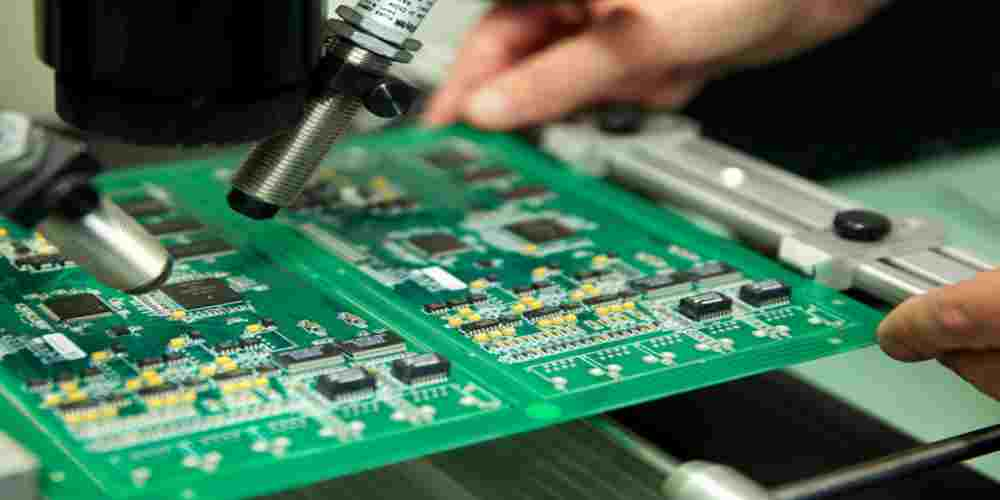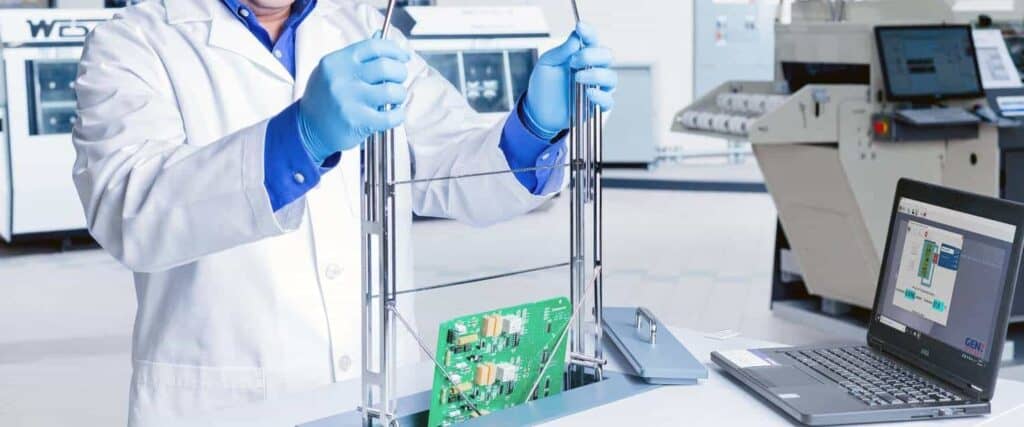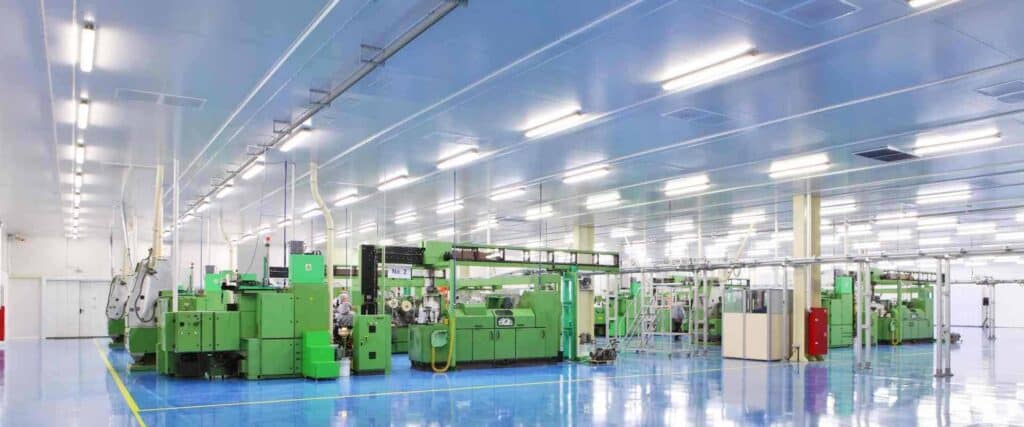Electronics design and manufacturing have become an integral part of our daily lives. From smartphones to cars, electronics are everywhere. The design and manufacturing process of electronics involves a complex set of procedures that require a high level of expertise and precision.
In the electronics design phase, engineers use specialized software to create a blueprint of the product. This blueprint is then used to create a prototype that is tested and refined until it meets the desired specifications. The manufacturing phase involves the actual production of the product, which includes sourcing components, assembly, and quality control. The manufacturing process must be carefully managed to ensure that the final product meets the design specifications and is of high quality.
The demand for electronics is constantly increasing, and as a result, the electronics design and manufacturing industry is constantly evolving. Advancements in technology have led to the development of new and innovative products that require specialized knowledge and expertise to design and manufacture. With the increasing demand for electronics, it is essential to have a deep understanding of the design and manufacturing process to ensure that products meet the highest standards of quality and reliability.

Electronics Design
When it comes to designing electronics, there are two main aspects to consider: hardware design and software design. Both are essential for creating functional and reliable electronic devices.
Hardware Design
Hardware design involves creating the physical components of an electronic device. This includes selecting the appropriate components, designing the circuit board, and ensuring that all components are properly connected and integrated.
One important consideration in hardware design is the power source. The power source must be able to provide the necessary voltage and current to the components without overheating or causing damage. Additionally, the design must take into account any safety regulations and standards that apply to the device.
Software Design
Software design involves programming the electronic device to perform its intended functions. This includes designing the user interface, writing the code, and testing the software to ensure that it works correctly.
One important consideration in software design is the user experience. The software must be intuitive and easy to use, with clear instructions and feedback. Additionally, the software must be able to handle any errors or unexpected inputs that may occur.
Overall, electronics design requires careful consideration of both hardware and software design. By taking a systematic and thorough approach, designers can create reliable and functional electronic devices that meet the needs of their users.
Manufacturing

When it comes to electronics design and manufacturing, the manufacturing process is a crucial step. It involves the creation of printed circuit boards (PCBs), assembly of components, and testing to ensure that the final product meets the required specifications.
PCB Manufacturing
PCB manufacturing is the process of creating the board that will house the electronic components. It starts with the design of the board, which is then transferred onto a copper-clad laminate. The copper is etched away to create the traces and pads that will connect the components. The board is then drilled to create holes for the components to be mounted.
There are several methods of PCB manufacturing, including:
- Chemical etching
- Milling
- Laser cutting
Each method has its advantages and disadvantages, and the choice of method will depend on the requirements of the project.
Assembly
Once the PCB has been manufactured, the next step is to assemble the components onto the board. This involves placing the components onto the board and soldering them in place.
There are two methods of assembly:
- Surface mount technology (SMT)
- Through-hole technology (THT)
SMT involves placing the components onto the surface of the board and soldering them in place. THT involves inserting the components through holes in the board and soldering them in place.
Testing
Testing is the final step in the manufacturing process. It involves verifying that the product meets the required specifications and is functioning correctly.
There are several types of testing, including:
- Visual inspection
- Electrical testing
- Functional testing
Visual inspection involves checking the product for any defects or issues. Electrical testing involves measuring the electrical properties of the product. Functional testing involves checking that the product is functioning correctly.
In conclusion, the manufacturing process is a crucial step in electronics design and manufacturing. It involves the creation of PCBs, assembly of components, and testing to ensure that the final product meets the required specifications.
Quality Control

Quality control is an essential aspect of electronics design and manufacturing. It ensures that the final product meets all the necessary standards and specifications. Quality control involves several processes, including testing procedures and quality standards.
Testing Procedures
Testing procedures are an essential part of quality control. They involve testing the product at different stages of the manufacturing process to ensure that it meets all the necessary specifications. The testing procedures include:
- Functional testing: This involves testing the product to ensure that it performs its intended function.
- Environmental testing: This involves testing the product to ensure that it can withstand different environmental conditions.
- Reliability testing: This involves testing the product to ensure that it is reliable and can last for a long time.
- Safety testing: This involves testing the product to ensure that it is safe to use.
Quality Standards
Quality standards are essential for ensuring that the final product meets all the necessary specifications. The quality standards include:
- ISO 9001: This is a standard that outlines the requirements for a quality management system. It ensures that the product meets all the necessary quality standards.
- IPC-A-610: This is a standard that outlines the requirements for electronic assemblies. It ensures that the product meets all the necessary quality standards for electronic assemblies.
- RoHS: This is a standard that restricts the use of certain hazardous substances in electrical and electronic equipment. It ensures that the product is safe for use.
In conclusion, quality control is an essential aspect of electronics design and manufacturing. It ensures that the final product meets all the necessary standards and specifications. The testing procedures and quality standards are essential for ensuring that the product is reliable, safe, and meets all the necessary quality standards.
Supply Chain Management
Effective supply chain management is crucial for electronics design and manufacturing. It involves managing the flow of goods and services, from the sourcing of raw materials to the delivery of finished products to customers. In this section, we will discuss two crucial aspects of supply chain management: component sourcing and logistics.
Component Sourcing
Component sourcing is the process of identifying and obtaining the necessary electronic components for a product. This involves finding reliable suppliers, negotiating prices, and ensuring that the components meet the required specifications.
To ensure efficient component sourcing, it is essential to maintain good relationships with suppliers. This involves regular communication, timely payments, and a commitment to quality. It is also important to have a backup supplier in case of any issues with the primary supplier.
Logistics
Logistics involves the management of the physical flow of goods and services. This includes transportation, warehousing, and distribution. Effective logistics management ensures that products are delivered to customers on time and in good condition.
To ensure efficient logistics, it is important to have a well-organized system for tracking inventory and managing orders. This involves using software systems that can track inventory levels, monitor order status, and provide real-time updates on delivery times.
In addition, it is important to work with reliable shipping partners who can provide timely and cost-effective transportation services. This involves negotiating favorable rates with shipping companies and ensuring that products are properly packaged and labeled for shipping.
Overall, effective supply chain management is critical for the success of electronics design and manufacturing. By focusing on component sourcing and logistics, companies can ensure that they have the necessary materials and resources to deliver high-quality products to their customers.
Cost Analysis

When it comes to electronics design and manufacturing, cost analysis is a crucial aspect that cannot be overlooked. Understanding the costs involved in the production process is essential to ensure that the final product is priced competitively and meets the profit margins. The two main cost factors that need to be considered are the Bill of Materials and Labor Costs.
Bill of Materials
The Bill of Materials (BOM) is a comprehensive list of all the components required to build an electronic product. The BOM includes items such as resistors, capacitors, microcontrollers, and other electronic components. It is essential to have an accurate and up-to-date BOM to ensure that all the necessary components are ordered and that there are no delays in the production process.
The cost of the BOM can vary significantly depending on the complexity of the product and the quality of the components used. It is essential to strike a balance between the cost of the components and the quality of the final product. Using cheaper components may reduce the cost of the BOM, but it may also compromise the quality of the final product.
Labor Costs
Labor costs are another critical factor to consider in the cost analysis of electronics design and manufacturing. Labor costs include the salaries and wages of the workers involved in the production process. The labor costs can vary depending on the location of the production facility, the skill level of the workers, and the complexity of the product.
It is essential to optimize the production process to reduce labor costs without compromising the quality of the final product. Automation and outsourcing to low-cost countries are two ways to reduce labor costs. However, it is crucial to ensure that the quality of the final product is not compromised in the process.
In conclusion, cost analysis is crucial in electronics design and manufacturing. The Bill of Materials and Labor Costs are the two main cost factors that need to be considered. An accurate and up-to-date BOM is essential to ensure that all the necessary components are ordered and that there are no delays in the production process. Optimizing the production process to reduce labor costs is also crucial.

